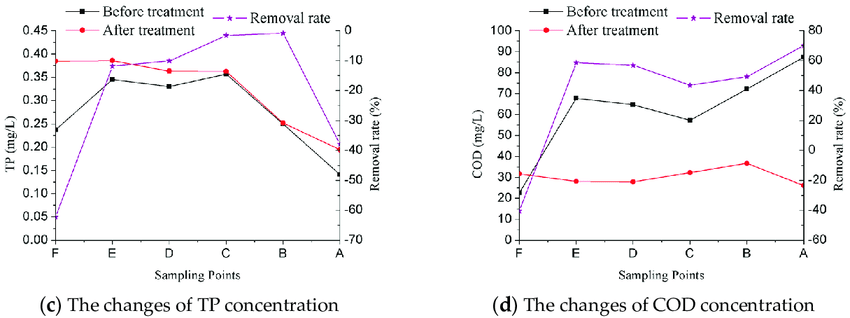The effects of environmental pollution on the global marine ecosystem, as well as local ones, have been tremendously adverse, with multiple species having become extinct or approaching the stage of extinction. Therefore, strategies for restoring the ecosystems that said organisms need to survive and thrive must be introduced into the context of the present-day environmentalism-oriented efforts. Bioremediation has been used recently as a means of restoring damaged marine environments, offering a chance at alleviating some of the harm produced (Bovio et al. 312). By using the properties of some microorganisms, such as compound microbial agents, which allow removing contaminants from target environments, the global community will be able to contribute to the management of the drastic effects of pollution.
The idea of introducing microorganisms that absorb pollutants into contaminated marine settings has been quite popular recently as a possible response to water pollution, in particular. A case study by Gao et al. suggests injecting microorganisms such as the “HP-RPe-3 compound microbial agent” into highly polluted aquatic areas as the measure needed for restoring the original ecosystem (645). According to the case study results, the proposed measure against pollution allows reducing the extent of water contamination substantially (Gao et al. 657). Specifically, the study explains that microorganisms such as the HP-RPe-3 compound microbial agent mentioned above allow enhancing the rates of pollutant degradation significantly. Moreover, the study confirms that photosynthetic bacteria are beneficial from both economic and environmental perspectives since the specified agents are comparatively cheap and easy to manipulate, which is crucial for addressing pollution problems observed on a large scale.
The study also outlines the multiple benefits of using the HP-RPe-3 compound microbial agent as the microorganism that helps to accelerate the process of degradation in ammonia nitrogen. Since ammonia nitrogen is one of the main water pollutants, the application of the microbial agent in question should be considered critical for managing water pollution and preventing the further contamination of groundwater. As the picture below shows, the specified agent allows for the creation of a chemical bond that increases the speed of degradation for the adverse elements, namely, ammonia nitrogen (NH3-N) contained within the bond, thus rendering it harmless and easy to remove from the water.

The study under analysis indicates that the increase in the process of pollutant decomposition, to which microbial agents contribute significantly, provides a perfect alternative solution to fighting marine pollution. Furthermore, there are strong indications that the introduction of the said microbial agent into larger marine contexts will allow minimizing the damage produced by major instances of pollution. Specifically, the opportunities for addressing the impact of chemicals being dumped into the ocean may emerge after incorporating the specified agent into the set of tools for handling the current pollution crisis. Due to the strong effect that the HP-RPe-3 compound has on aquatic environments, it could be assumed that it may also work in marine settings.
At this point, it is necessary to mention that introducing the said agent into the marine context may imply a larger range of obstacles than one might presently believe to face. Specifically, due to the difference between marine and freshwater settings, the effects that the HP-RPe-3 compound produces may be reduced slightly. Indeed, the case study in question appears to have tested the proposed strategy in the freshwater environment, whereas the marine context suggests the presence of other constituents, primarily, chloride, sodium, and sulfates (Gao et al. 648). Therefore, further tests will have to be administered to promote the specified microorganism as the main agent in marine water purification.
Nonetheless, the existing evidence points to the efficacy of the suggested tool. Namely, the inclusion of the HP-RPe-3 compound agent into polluted environments is expected to reduce the decomposition time, as well as the general structure and longevity, of key pollutants observed in the marine settings. Therefore, the introduction of microbial agents, in general, and the specified resource, in particular, into marine settings as the method of removing the observed contamination should be explored as a viable tool with massive potential. Specifically, the introduction of similar microorganisms into the marine setting may help in addressing not only the problems of NH3-N removal but also the management of oil spills.
Since numerous types of microorganisms possess the ability to purify the environment in which they are placed, their use as the vehicle for bioremediation must be considered a crucial opportunity for handling the effects of pollution. As the case study under analysis has indicated, introducing microorganisms such as the HP-RPe-3 compound microbial agent into the environment of a heavily contaminated water source allows purifying it to a significant extent. Therefore, the suggested technique of injecting microorganisms known for their cleansing properties into the settings of contaminated aquatic areas is likely to produce noticeably positive effects on the overall level of water quality. As a result, multiple marine areas will be restored, with the opportunity for their endemic species to thrive in the newly purified ecosystems.
Works Cited
Bovio, Elena, et al. “The Culturable Mycobiota of a Mediterranean Marine Site after an Oil Spill: Isolation, Identification and Potential Application in Bioremediation.” Science of the Total Environment, vol. 576, 2017, pp. 310-318.
Gao, Hong, et al. “Application of Microbial Technology Used in Bioremediation of Urban Polluted River: A Case Study of Chengnan River, China.” Water, vol. 10, no. 5, 2018, pp. 643-663.
Heidarrezaei, Mahshid, et al. “Isolation and Characterization of a Novel Bacterium from the Marine Environment for Trichloroacetic Acid Bioremediation.” Applied Sciences, vol. 10, no. 13, 2020, pp. 1-18.